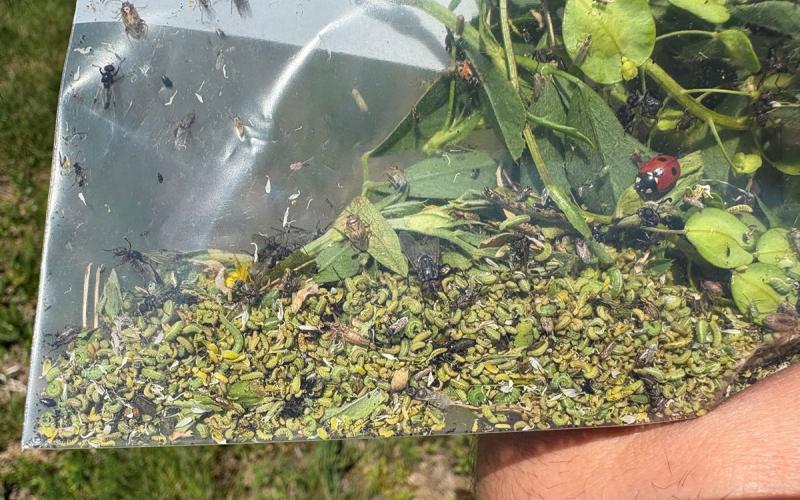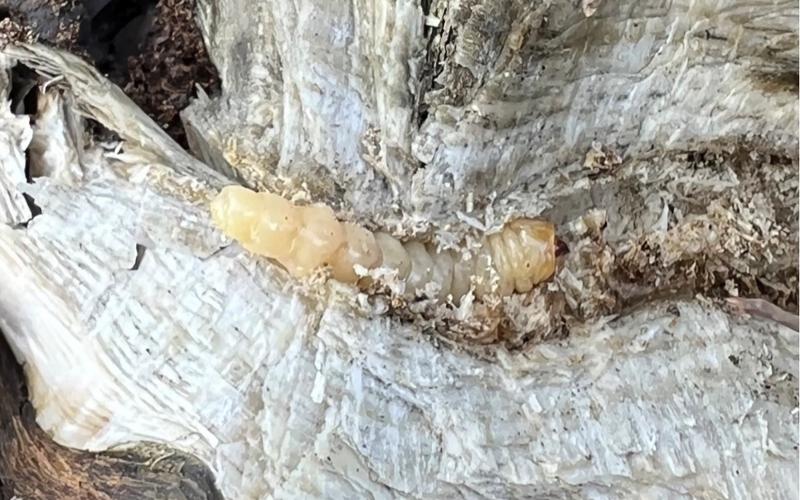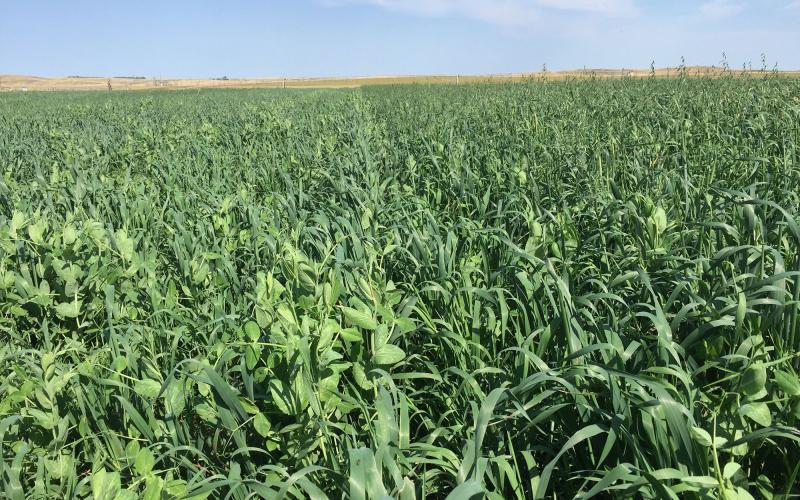Activity of alfalfa weevils has been documented in many areas of South Dakota during the last week. At this time, the entire state has accumulated enough degree days for alfalfa weevils to be active. In some areas where the most severe feeding has been reported, enough degree days have been accumulated that the alfalfa weevil should be pupating. However, it is still active in the fields, which is likely due to the off and on warm/cold periods we experienced in April and May. Alfalfa should be closely monitored and scouted to prevent severe defoliation. Alfalfa weevils will likely be active for at least another week or two in the southern counties, and activity will likely continue to increase as we move north in the state. The forecasted warmer weather will increase alfalfa weevil activity during the next week.
Estimating Activity
To monitor for alfalfa weevils, we can estimate activity based on degree day accumulation. The equation for degree days is:
(Maximum daily temperature + Minimum daily temperature)/2 – The Developmental Threshold
For the alfalfa weevil, the developmental threshold is 48°F. This equation is used for days that the maximum temperature exceeds 48°F. In cases where the minimum temperature is lower than 48°F, the actual temperature is substituted by the 48°F developmental threshold since no development is occurring below it. Degree day accumulation begins on January 1st. First overwintering adult alfalfa weevil activity is generally observed around 200-degree days and larvae hatch is generally around 300-degree days (Table 1).
The alfalfa weevil has four larval instars, with the 1st being the smallest larvae and the 4th being the largest larvae. The later instar larvae will consume additional leaf tissue, which results in increased defoliation. As a result, management would ideally be done while larvae are still in the 1st and 2nd instar growth stages.
|
Degree Days |
Alfalfa Weevil Activity (Overwintering as Adults) |
|---|---|
|
|
Limited to no activity of alfalfa weevils. |
|
|
Overwintering adult activity is observed in alfalfa fields (begin scouting fields). |
|
|
Spring laid eggs hatch. First instar larvae begin feeding. |
|
|
Second instar larvae feeding. |
|
|
Third instar larvae feeding. |
|
|
Fourth instar larvae feeding. (Period when greatest damage will occur) |
|
|
Pupation. |
|
|
Adult emergence (will overwinter). |
| Location |
Since January 1, 2020 |
|---|---|
| Buffalo |
|
| Newell |
|
| Rapid City |
|
| Hot Springs |
|
| Lemmon |
|
| Faith |
|
| Cottonwood |
|
| Mission |
|
| Selby |
|
| Gettysburg |
|
| Pierre |
|
| Winner |
|
| Aberdeen |
|
| Huron |
|
| Mitchell |
|
| Tyndall |
|
| Sisseton |
|
| Brookings |
|
| Vermillion |
|


